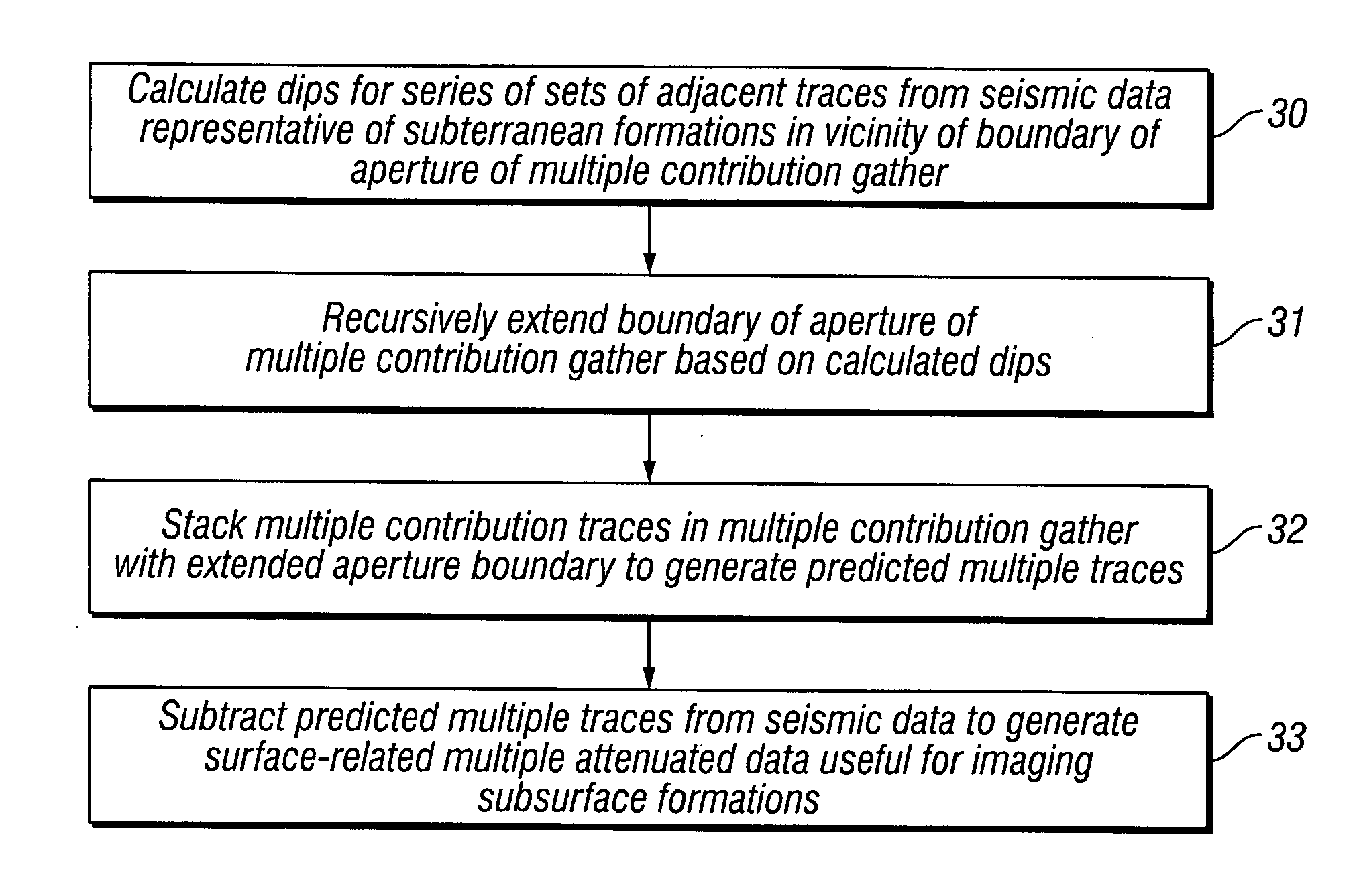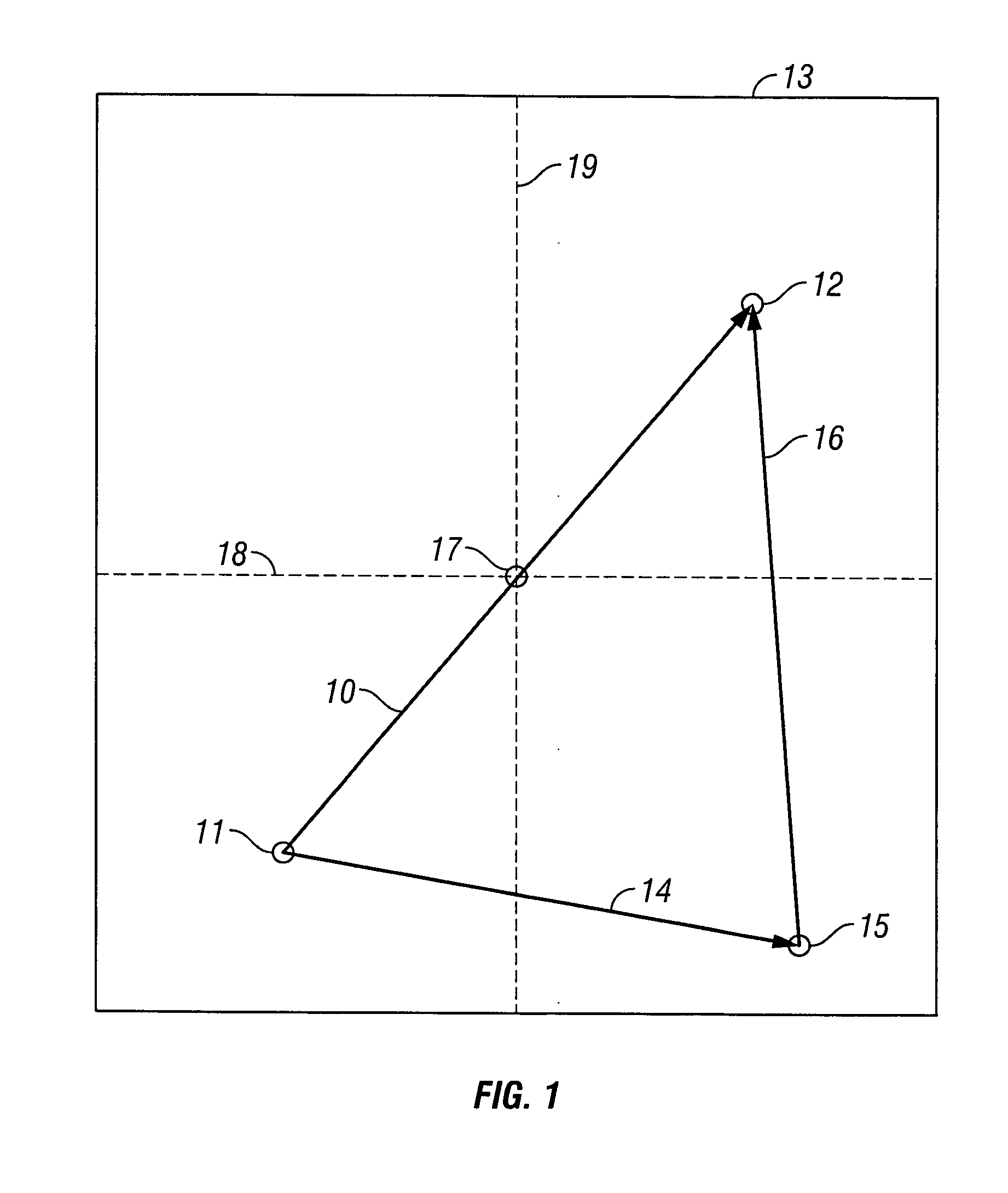Method for dynamic aperture determination for three-dimensional surface-related multiple elimination
a three-dimensional surface and multiple elimination technology, applied in the field of geophysical prospecting, can solve the problems of differences in acoustic impedance at the interface, too large aperture, and too small apertur
- Summary
- Abstract
- Description
- Claims
- Application Information
AI Technical Summary
Benefits of technology
Problems solved by technology
Method used
Image
Examples
Embodiment Construction
[0025]The invention is a method for transforming seismic data into noise-attenuated data, using dynamic aperture determination for a multiple contribution gather. The invention can be used in a 3D predict-and-subtract process to attenuate surface related multiples in seismic data. The location at which the multiples are to be predicted and subtracted is defined by a source-receiver trace. FIG. 1 is a schematic diagram of construction of a multiple contribution gather for a source-receiver trace, as in the method of the invention. The source-receiver trace 10 is determined by a combination of a specific source location 11 and a specific receiver location 12. The process of predicting the surface related multiples from seismic data for this source-receiver trace 10 comprises convolving pairs of traces and then accumulating the convolution results over a surface area 13. The first trace 14 in each pair of convolved traces has the same specific source location 11 as the source-receiver ...
PUM
 Login to View More
Login to View More Abstract
Description
Claims
Application Information
 Login to View More
Login to View More - R&D
- Intellectual Property
- Life Sciences
- Materials
- Tech Scout
- Unparalleled Data Quality
- Higher Quality Content
- 60% Fewer Hallucinations
Browse by: Latest US Patents, China's latest patents, Technical Efficacy Thesaurus, Application Domain, Technology Topic, Popular Technical Reports.
© 2025 PatSnap. All rights reserved.Legal|Privacy policy|Modern Slavery Act Transparency Statement|Sitemap|About US| Contact US: help@patsnap.com



